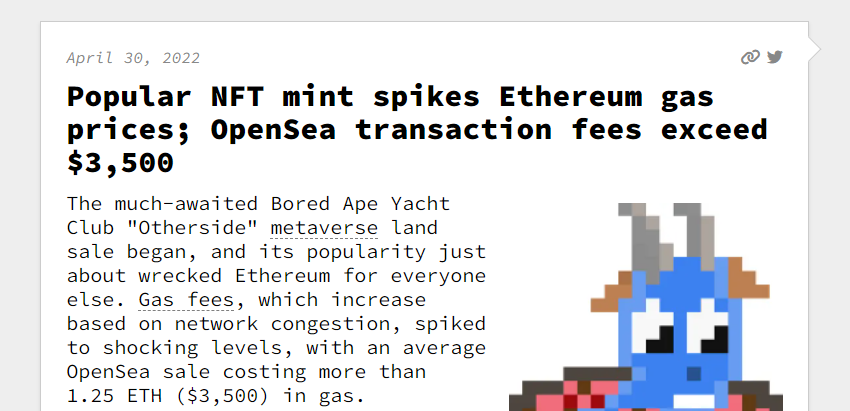Problems with NFTs
NFTs, an abbreviation for “non-fungible tokens” have been part of the news cycle quite a bit over the last couple of years.
The term itself is not specific to crypto NFTs, but this article is specific to problems with NFTs as referenced frequently in the media: NFTs minted on the Ethereum blockchain, for example.
As an artist, art collector, or member of the art community, you’ll want to understand NFTs better, so you can decide if it’s worth your time to mint or own them.
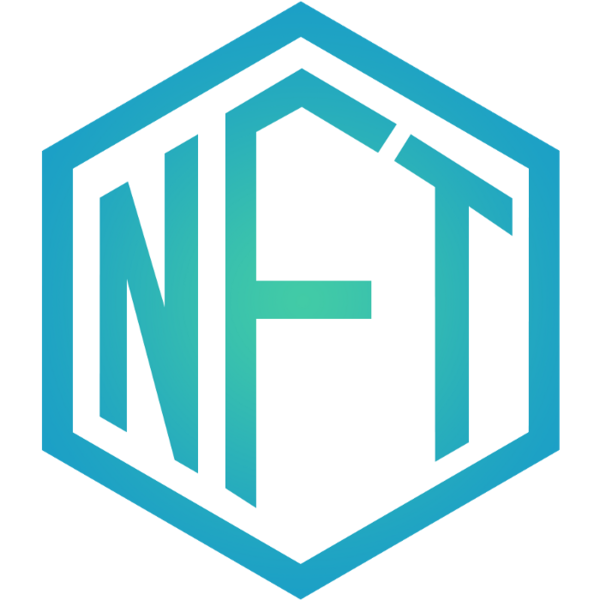
What Is a Crypto NFT?
Fungible is a property of a commodity which means the specific individual units are interchangeable. Examples of fungible commodities include dollars, bags of popcorn at the movies, or barrels of crude oil. In all of the above examples, one can be exchanged for the other and no one is claiming one dollar is worth more than another, for example.
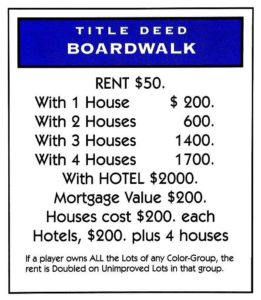
Non-fungible would then mean that each item has a different value. Ever play the Parker Brothers game, Monopoly? Each set comes with cardboard property cards representing title to a rent-earning property. Mediterranean Avenue sells for $60 while Boardwalk sells for $400. If we’re playing the game, and I trade you my Mediterranean card for your Boardwalk card, I’m entitled to more rent or can resell my property for more Monopoly money. The cards would thus be non-fungible (one piece of cardboard is worth more than the other within an active game of Monopoly).
Token simply means something that is representational of something else and can be exchanged for it when desired. Coupons can be exchanged for goods, video game currency can be exchanged for in-game gear, etc.
Combine “non-fungible” and “token” and then apply those words within the cryptocurrency world and you get what the press is covering heavily.
Non-fungible tokens (NFTs) are cryptographic assets on a blockchain with unique identification codes and metadata that distinguish them from each other. Unlike cryptocurrencies, they cannot be traded or exchanged at equivalency. This differs from fungible tokens like cryptocurrencies, which are identical to each other and, therefore, can serve as a medium for commercial transactions.
Whereas in Monopoly, your ownership of Boardwalk is established by your holding the card for it on your side of the board, in a blockchain, a reference to Boardwalk belonging to you would be saved across thousands of other computers as Boardwalk belonging to your Crypto Wallet at this time.
In other words, unlike a title to a piece of real property (a house), which is typically stored in a county/provincial courthouse, your claim to ownership is stored across many connected computers on the internet, none of which are backed by a government or more traditional, trusted source of ownership.
The thinking goes that since cryptocurrencies are not backed by any authority or government, the distribution of that claim and layers of encryption (that are a feature of cryptocurrencies) give everyone some assurance that ownership cannot be changed/moved simply by a hacker editing records.
So as an artist or art collector, you may “mint” or pay a “gas tax” to create a new NFT that points at a URL of your choosing. When NFTs are used in reference to art, they’re typically pointing at JPG such as one of the 10,000 images in the Bored Ape Yacht Club.
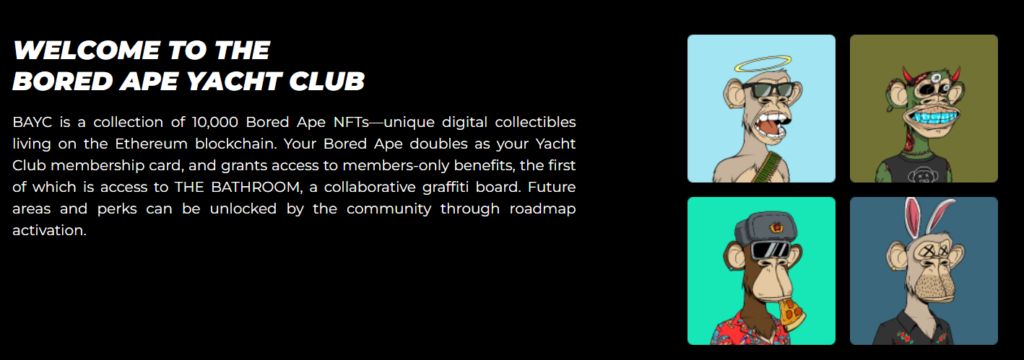
To Mint simply means to create an NFT on the blockchain of your choosing. You decide what URL it points at. Once minted, copies of the record as distributed across the chain by the miners.
Gas Tax is the fee you pay so your NFT transaction can be executed, which is accomplished on the network by miners (members of the network who are running the blockchain code.
Miners are the network participants who sell their computing power to the blockchain to maintain it and further encrypt transactions. Their cost is maintaining their computer hardware and the electricity required to run their mining rigs.
Known Problems with Crypto NFTs
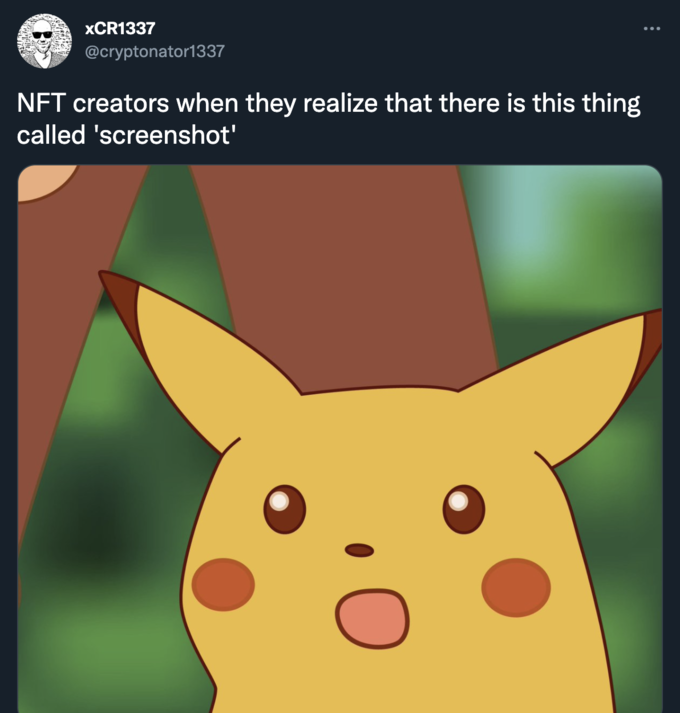
NFT Owners Don’t Get the Exclusive Right to Enjoy or Show the Piece
When you buy physical art, you have a certain degree of exclusivity about who sees it and what that experience is like. While there may be photos of your art on the internet, the experience of seeing a photo of a great work of art versus seeing the art itself is generally inferior.
Every great museum seeks out cornerstone pieces of art to draw people to visit in person.
On the other hand, one problem with NFTs is you can’t restrict access. Pointing an NFT at a jpeg on the internet does nothing to prevent viewership nor stop infinite copies from being created and saved by anyone who wants them.
NFTs Are Not & Do Not Contain Art
You’ll hear the term “NFT Artist” as if an NFT is a new format. “She’s an NFT Artist” is not describing talent with a medium such as the terms “painter” and “sculptor.”
As mentioned above, an NFT is just a digital record that points at something.
The artists behind the works generally work in the same Adobe or similar graphic design products as used to create any other digital image. Once the art is uploaded somewhere, they mint an NFT to point at it. Note: one problem with NFTs is that nothing about the process guarantees there aren’t already other copies of the same art uploaded elsewhere.
The art is digital in most cases. The format is a jpeg or png or any other format that can be shown on a computer. The NFT simply stores a URL that points at that image on a server somewhere.
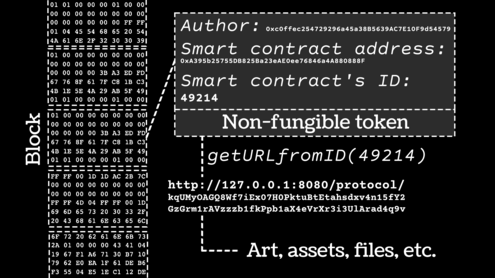
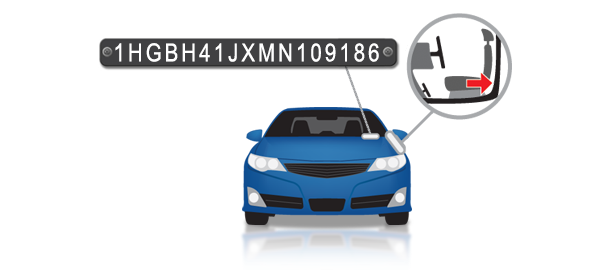
NFTs Are One-Directional
Other objects of value carry a reference that can be used to verify who holds the rights to them.
Automobile manufacturers give each vehicle a “VIN” number as they produce it. When you want to purchase a second-hand vehicle, you can use the VIN to verify that the person who is attempting to sell it actually owns it. Vehicles are registered by governments when they enter their borders.
Property/real estate has unique GPS coordinates and location relative to other properties such as its address. Those characteristics can be used to find the title for it, which includes the current owner.
On the other hand, an NFT points at a location on a server, but neither that location nor the JPEG living there if there is one says “this NFT owns me.”
The File an NFT References Can Change
An NFT is just a single reference to a single server location, but nothing about the NFT keeps whoever controls that server from changing, removing it, etc.
Exposing the point above in a broader article about Web 3.0, author Moxie Marlinspike minted an NFT that showed one image on OpenSea, another on Rarible, and a Poop emoji in his digital wallet.
Most concerning, OpenSea took down his NFT and it disappeared from his wallet. In other words, he lost access to his own NFT:
The takedown suggests that I violated some Term Of Service, but after reading the terms, I don’t see any that prohibit an NFT which changes based on where it is being looked at from, and I was openly describing it that way.
What I found most interesting, though, is that after OpenSea removed my NFT, it also no longer appeared in any crypto wallet on my device. This is web3, though, how is that possible?
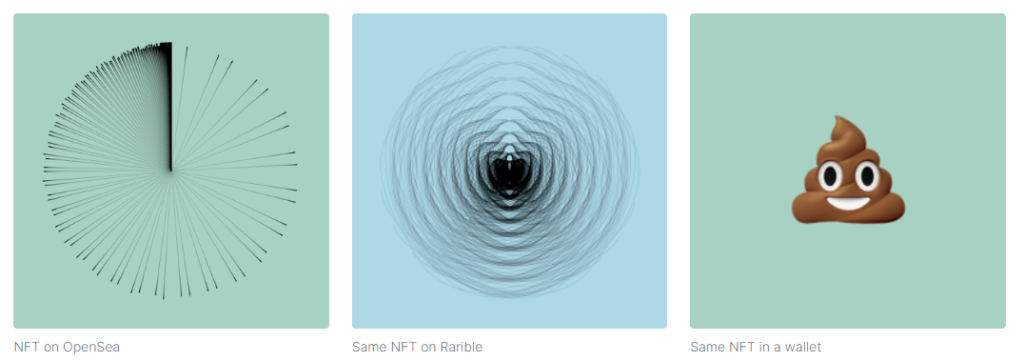
Creating NFTs Is Expensive
When you mint and then transfer an NFT, you pay “Gas Tax,” which is the fee to cover the expenses of the miners on the network, who verify the transaction, store it, encrypt it and distribute it.
Unlike banks, which charge a flat fee for an ACH transaction or wire transaction, regardless of size, the cost to mint an NFT can vary dramatically.
If the network is busy, the cost for a single transaction can be in the thousands of dollars, as happened when the latest Bored Ape collection was released.
In other words, the transactional fees can far exceed the purchase price.
If you want to avoid the high fees problem with NFTs, you’ll have to monitor network traffic and find an affordable time slot.
NFTs Require Complex Crypto Transactions & Tax Filings
When you purchase anything and sell it later for more than you paid, you’ve achieved a “capital gain” and owe taxes on your profit in your home currency.
While currencies fluctuate in value against each other all the time, governments don’t attempt to tax the enhanced buying power of their own currency when held by their citizens.
If you are thinking about owning NFTs, you’ll have to do some pretty complex accounting. The second you purchase any crypto (and you may own more than one), you’ve in essence become a currency trader and owe taxes on any gains you make in the “foreign” currency.
Your accounting will become pretty complex when you’re having to record the value at purchase and sale of both the NFTs themselves and also the crypto you purchased to buy the NFT or sold when you wanted to use your profit for ordinary needs.
As on author put it, “Happy Tax Season, Crypto Bros.“
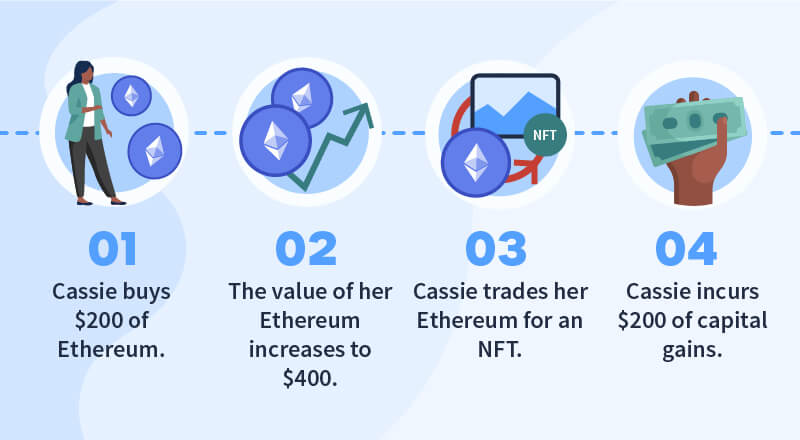
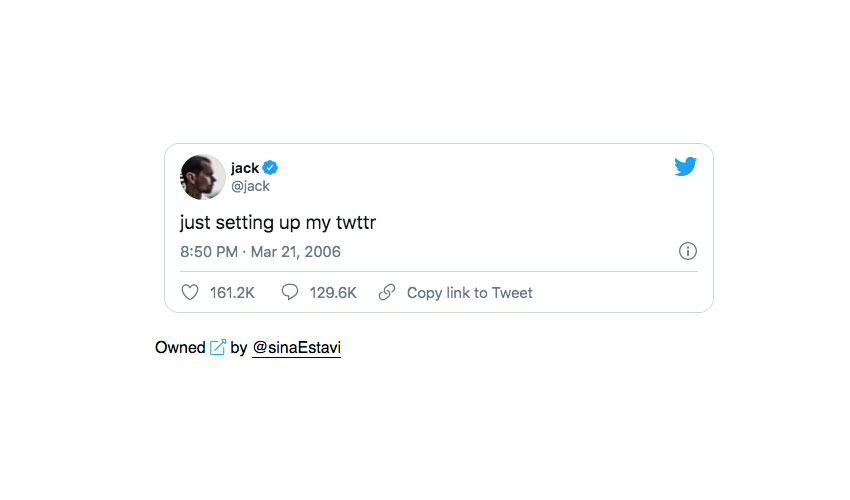
NFT Valuations Fluctuate Like Crazy
When crypto NFTs first began getting coverage, Jack Dorsey minted an NFT of his first Tweet and sold it for $2.9 million. We covered that story and other notable early NFT sales in “NFTs & Etchings: How Are They Different” back in May of 2021.
The buyer, Sina Estavi, listed it for sale for $48 million this year with a claim that he would donate 50% of the proceeds to charity. Appreciation of over 10x from one year to the next would have been fantastic. But then the top bid by his deadline was just $280. Even Elon Musk wouldn’t buy it. Yikes!
Prices for minted NFTs of art have jumped all over the place, especially as “investors” have sold them to themselves at inflated prices to artificially create a price floor. See “Scams” below.
NFTs Are Harmful to the Environment
While buyers and sellers are faced with Gas Tax fees when buying and selling NFTs, the miners who support the network have to make margin on their electricity bills, and running expensive mining equipment 24-7 gets expensive.
Wired recently reported that “if the world’s countries were ranked by energy consumption, the combined nation of Bitcoin and Ethereum would slot in between Italy and the United Kingdom.”
In additional coverage titled “NFTs Are Hot. So Is Their Effect on the Earth’s Climate,” the found a French artist who could have powered his art studio for two years for what he paid in Gas Tax on a single NFT transaction.
Hopefully, a more environmentally friendly crypto NFT option will become available soon.

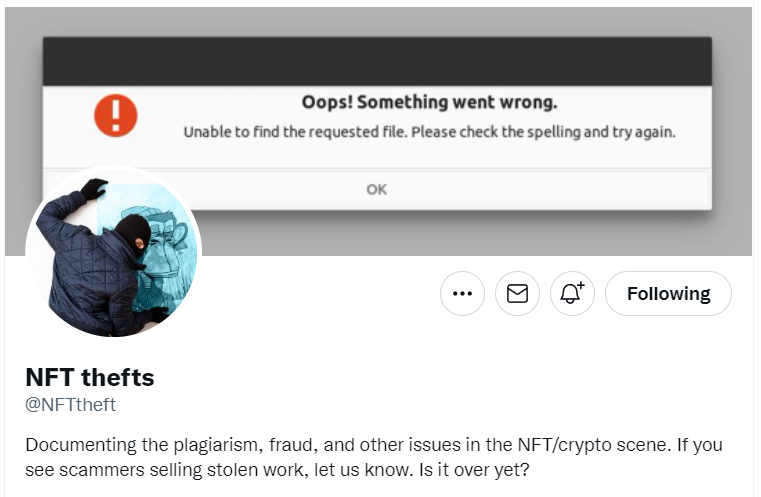
NFT Marketplaces Are Full of Scams
At the macro-level and given all the problems with NFTs, plenty of investors are calling the whole phenomena a “pump and dump.”
A particular NFT’s value seems to be very tightly correlated with the amount of present hype, and some NFT scam cases include a person buying an NFT they already own in another wallet to artificially inflate the price have been reported.
Since anyone can create an NFT of anything they can find on the internet, there is also a huge problem with counterfeit NFTs. Artist Aja Trier had 86,000 NFTs minted of her works and listed on OpenSea without permission.
For artists, take a look at NFTTheft on Twitter to stay current on the newest scams.
Have You Spotted Other Types of Problems with NFTs?
Please drop us a note via our contact form. We’re always updating our articles and adding more resources for artists and art collectors.

